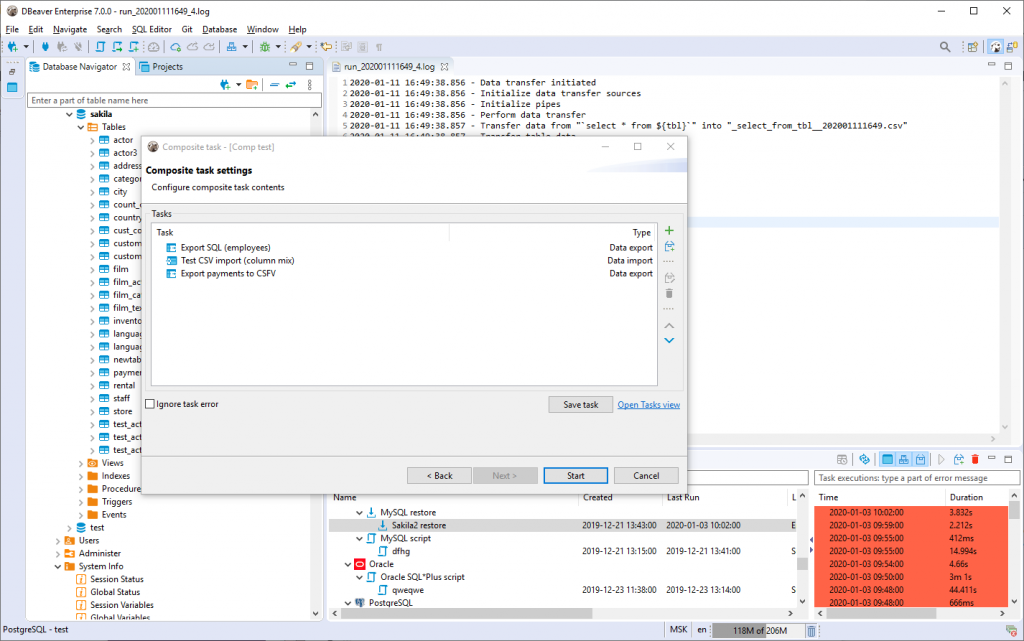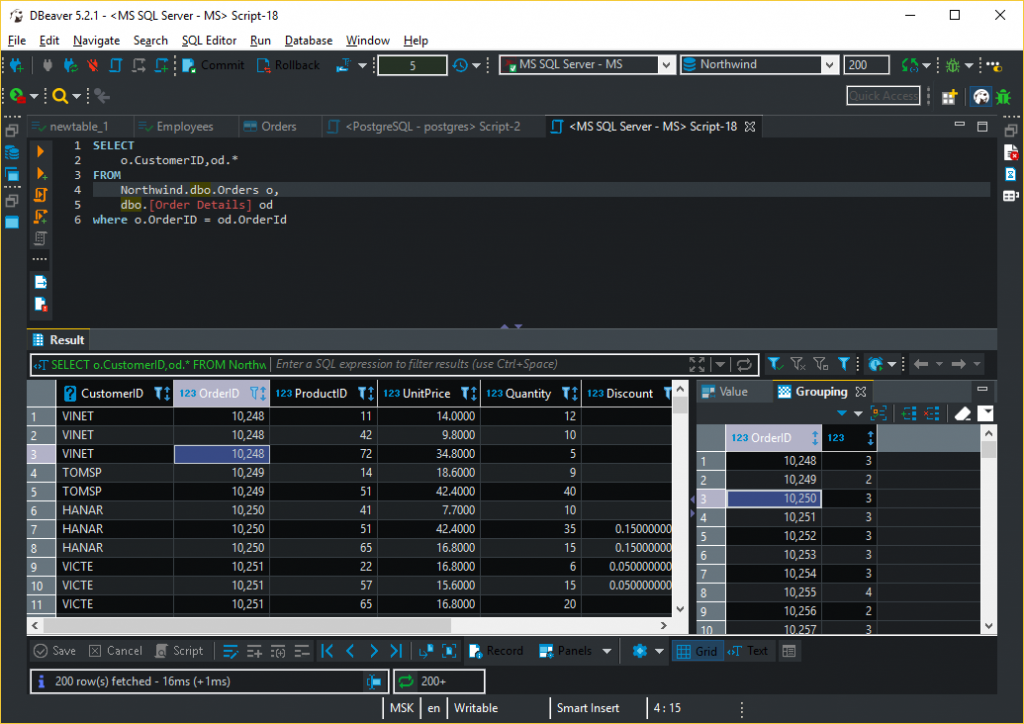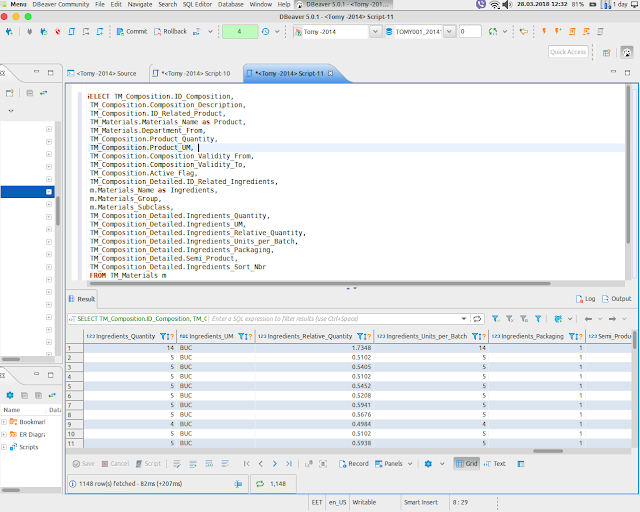
- Dbeaver tutorial how to#
- Dbeaver tutorial install#
- Dbeaver tutorial drivers#
- Dbeaver tutorial driver#
You are now ready to start entering and executing your SQL.
Dbeaver tutorial install#
You should get a download and install completion dialog, as below:

Visual Studio Code has a wide variety of plugins, including many for PostgreSQL.īelow is a screenshot of Visual Studio Code with the Microsoft “PostgreSQL for Visual Studio Code” plugin highlighted and ready to install - just press the green “install” button and. Visual Studio Code is a lightweight source code editor which runs on your desktop and is available for Windows, macOS and Linux.
Dbeaver tutorial how to#
How to connect to Visual Studio Code with PostgreSQL You can now view table data, metadata, and issue SQL commands as usual. Select Database Type -> PostgreSQL from the drop-down list, and enter your connection details, as below:Īnd your database objects are now shown in the tree on the left. You should get a dialog that looks like this: Right-click on “Oracle Connections” in the left tree, and select “New Connection”. Now you are ready to connect to your database. jar in your SQL*Developer Java lib/ext directory. I am on Java v1.8, so I downloaded the PostgreSQL JDBC 4.2 Driver, 42.2.12.
Dbeaver tutorial driver#
To connect to pretty much any kind of Postgres database, you are going to need a postgresql JDBC driver.ĭownload the appropriate driver for the version of SQL*Developer you are running (Help -> About -> Java Platform) You should get a screen like this (you may already have SQL*Developer installed, in which case you can skip the download step). SQL*Developer can be downloaded from the Oracle website and is a Java-based tool that will run on pretty much any platform that runs Java, or even OpenJDK.ĭownload the appropriate zip bundle, unzip somewhere you can execute from, and run the sqldeveloper.exe file. This is a commonly used tool by Oracle professionals, and it can also be used to maintain a variety of other databases, Postgres included. How to connect to SQL*Developer with PostgreSQL This will give me something to connect to, and something to look at, once I have connected the various IDEs. I’m going to demonstrate connectivity to an EDB Postgres Advanced Server from 64-bit Windows 10, but this is just as applicable to Postgres Community Edition and other Postgres-based databases too.īefore I connected to the database, I created an instance on port 5444, adjusted the security settings to allow external connections, and created a pgbench database, a pgbench superuser, and ran the pgbench executable as follows: The good news is that even if you use an IDE for another database, chances are that you will be able to use it for Postgres as well. Many database designers, developers and administrators use IDEs (Integrated Development Environment) as tools to access the internals of their database estate. There are many ways to access Postgres databases. Which means you are going to need a design and development environment in which to do so. Well, the first thing you are going to do (once you have secured your new database) is access it, and use it to store and distribute your data.

Note: If you run into trouble downloading the driver navigate to the source website and download the driver manually 3) Connect to your target databaseģ.1) Navigate through your target database & schema and right click on your target table and select import table dataģ.So, you’ve installed your Postgres database, whether Community Edition, EDB Postgres Advanced Server or one of many other cloud, container, or Database as a Service offerings out there. Set the path of the connection to the folder you created earlier (the JDBC URL will auto-populate)
Dbeaver tutorial drivers#
& from the list of drivers select Flat files(CSV) > CSV/DBF In the menu bar select Database > Create a New Connection Place the CSV you want to load into this folder 2) Create a CSV database connection

You can find installation instructions here 1) Create a folder to be used as your CSV Database If you are certain of the quality of your CSV & just want to import it quickly my subsequent post may be more useful. The following post demonstrates how to import CSVs using Dbeaver’s database to database export & import feature.


 0 kommentar(er)
0 kommentar(er)
